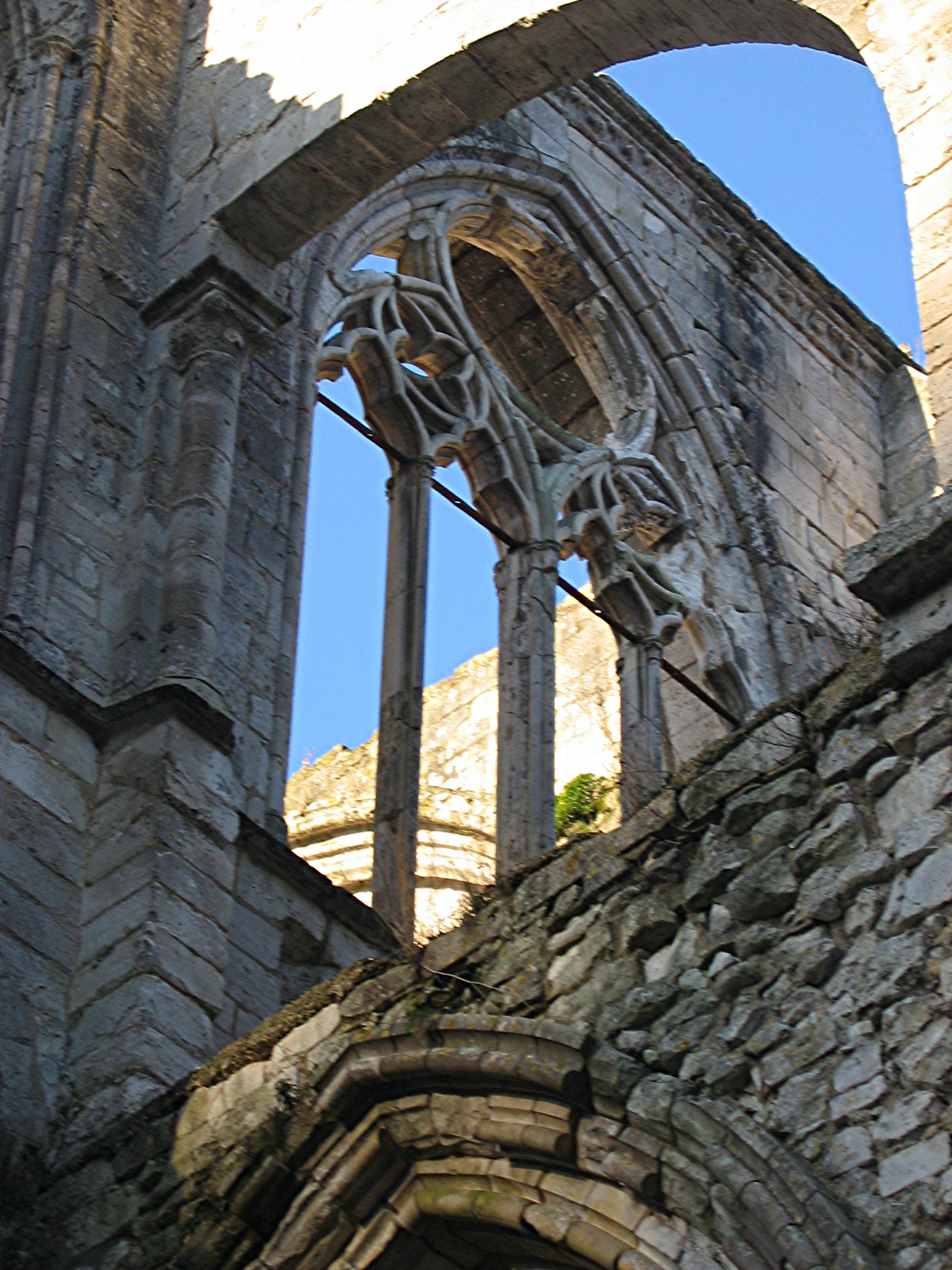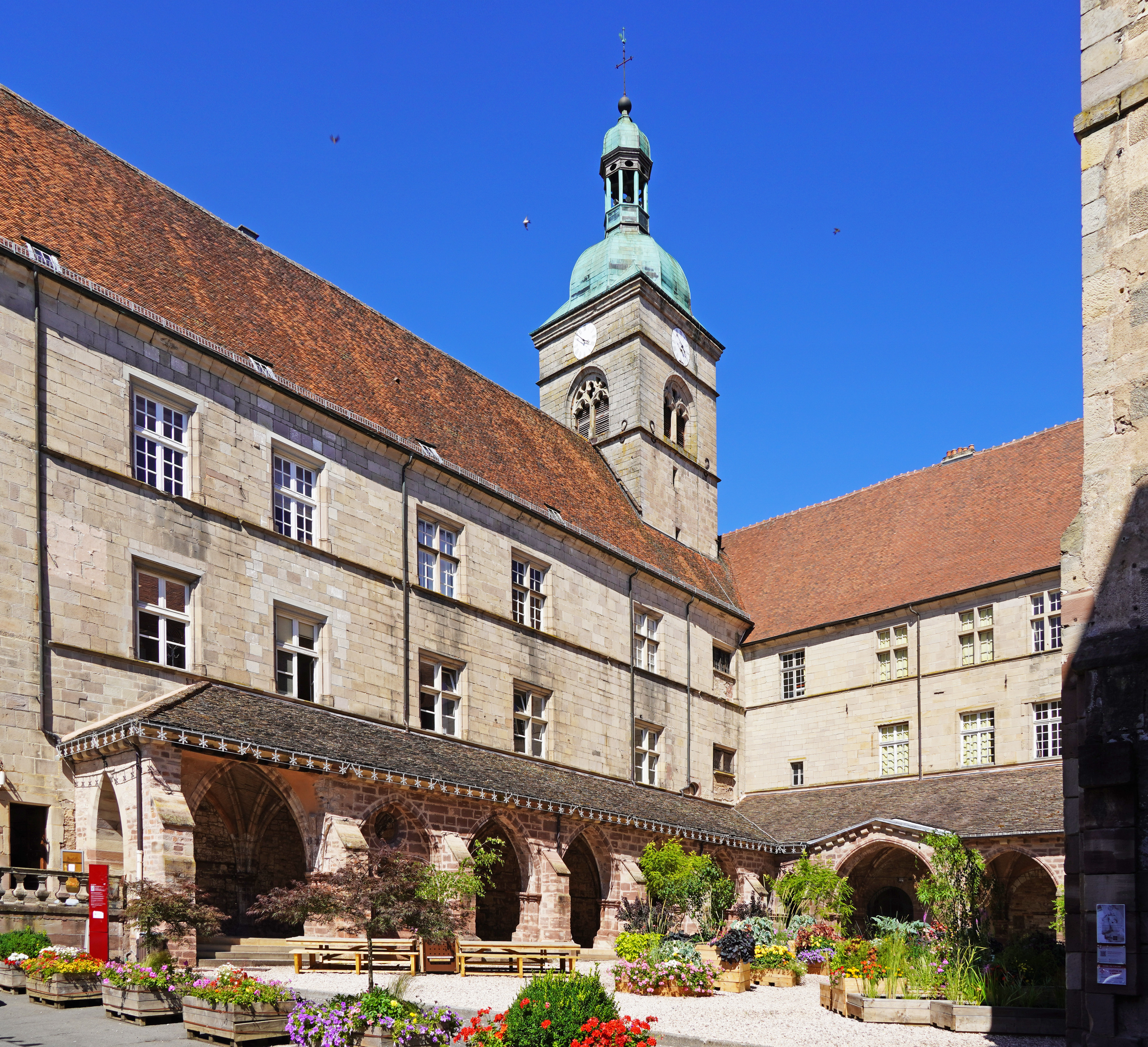|
Abbey Of Saint-Wandrille
Fontenelle Abbey or the Abbey of St. Wandrille is a Benedictine monastery in the commune of Rives-en-Seine. It was founded in 649 near Caudebec-en-Caux in Seine-Maritime, Normandy, France. First foundation It was founded by Wandregisel or Saint Wandrille (d. 22 July 668) and his nephew Godo, on land obtained through the influence of Wandregisel's friend Saint Ouen, Archbishop of Rouen. Wandrille, being of the royal family of Austrasia, held a high position in the court of his kinsman Dagobert I, but wishing to devote his life to God, he retired to the abbey of Montfaucon-d'Argonne, in Champagne, in 629. Later he went to Bobbio Abbey and then to Romainmôtier Abbey, where he remained for ten years. In 648 he returned to Normandy and established the monastery of Fontenelle,Alston, George Cy ... [...More Info...] [...Related Items...] OR: [Wikipedia] [Google] [Baidu] |
Columbanus
Columbanus ( ga, Columbán; 543 – 21 November 615) was an Irish missionary notable for founding a number of monasteries after 590 in the Frankish and Lombard kingdoms, most notably Luxeuil Abbey in present-day France and Bobbio Abbey in present-day Italy. Columbanus taught an Irish monastic rule and penitential practices for those repenting of sins, which emphasised private confession to a priest, followed by penances levied by the priest in reparation for the sins. Columbanus is one of the earliest identifiable Hiberno-Latin writers. Sources Most of what we know about Columbanus is based on Columbanus' own works (as far as they have been preserved) and Jonas of Susa's ''Vita Columbani'' (''Life of Columbanus''), which was written between 639 and 641. Jonas entered Bobbio after Columbanus' death but relied on reports of monks who still knew Columbanus. A description of miracles of Columbanus written by an anonymous monk of Bobbio is of much later date.O'Hara, Alexander, ... [...More Info...] [...Related Items...] OR: [Wikipedia] [Google] [Baidu] |
Ghent
Ghent ( nl, Gent ; french: Gand ; traditional English: Gaunt) is a city and a municipality in the Flemish Region of Belgium. It is the capital and largest city of the East Flanders province, and the third largest in the country, exceeded in size only by Brussels and Antwerp. It is a port and university city. The city originally started as a settlement at the confluence of the Rivers Scheldt and Leie and in the Late Middle Ages became one of the largest and richest cities of northern Europe, with some 50,000 people in 1300. The municipality comprises the city of Ghent proper and the surrounding suburbs of Afsnee, Desteldonk, Drongen, Gentbrugge, Ledeberg, Mariakerke, Mendonk, Oostakker, Sint-Amandsberg, Sint-Denijs-Westrem, Sint-Kruis-Winkel, Wondelgem and Zwijnaarde. With 262,219 inhabitants at the beginning of 2019, Ghent is Belgium's second largest municipality by number of inhabitants. The metropolitan area, including the outer commuter zone, covers an area of and had ... [...More Info...] [...Related Items...] OR: [Wikipedia] [Google] [Baidu] |
Saint-Omer
Saint-Omer (; vls, Sint-Omaars) is a commune and sub-prefecture of the Pas-de-Calais department in France. It is west-northwest of Lille on the railway to Calais, and is located in the Artois province. The town is named after Saint Audomar, who brought Christianity to the area. The canalised section of the river Aa begins at Saint-Omer, reaching the North Sea at Gravelines in northern France. Below its walls, the Aa connects with the Neufossé Canal, which ends at the river Lys. History Saint-Omer first appeared in the writings during the 7th century under the name of Sithiu (Sithieu or Sitdiu), around the Saint-Bertin abbey founded on the initiative of Audomar, (Odemaars or Omer). Omer, bishop of Thérouanne, in the 7th century established the Abbey of Saint Bertin, from which that of Notre-Dame was an offshoot. Rivalry and dissension, which lasted till the French Revolution, soon sprang up between the two monasteries, becoming especially virulent when in 1559 St Omer ... [...More Info...] [...Related Items...] OR: [Wikipedia] [Google] [Baidu] |
Boulogne-sur-Mer
Boulogne-sur-Mer (; pcd, Boulonne-su-Mér; nl, Bonen; la, Gesoriacum or ''Bononia''), often called just Boulogne (, ), is a coastal city in Northern France. It is a sub-prefecture of the department of Pas-de-Calais. Boulogne lies on the Côte d'Opale, a touristic stretch of French coast on the English Channel between Calais and Normandy, and the most visited location in the region after the Lille conurbation. Boulogne is its department's second-largest city after Calais, and the 183rd-largest in France.Téléchargement du fichier d'ensemble des populations légales en 2017 [...More Info...] [...Related Items...] OR: [Wikipedia] [Google] [Baidu] |
Chartres
Chartres () is the prefecture of the Eure-et-Loir department in the Centre-Val de Loire region in France. It is located about southwest of Paris. At the 2019 census, there were 170,763 inhabitants in the metropolitan area of Chartres (as defined by the INSEE), 38,534 of whom lived in the city (commune) of Chartres proper. Chartres is famous worldwide for its cathedral. Mostly constructed between 1193 and 1250, this Gothic cathedral is in an exceptional state of preservation. The majority of the original stained glass windows survive intact, while the architecture has seen only minor changes since the early 13th century. Part of the old town, including most of the library associated with the School of Chartres, was destroyed by Allies of World War II, Allied bombs in 1944. History Chartres was one of the principal towns in Gaul of the Carnutes, a Celts, Celtic tribe. In the Gallo-Roman period, it was called ''Autricum'', name derived from the river ''Autura'' (Eure), and a ... [...More Info...] [...Related Items...] OR: [Wikipedia] [Google] [Baidu] |
Viking
Vikings ; non, víkingr is the modern name given to seafaring people originally from Scandinavia (present-day Denmark, Norway and Sweden), who from the late 8th to the late 11th centuries raided, pirated, traded and settled throughout parts of Europe.Roesdahl, pp. 9–22. They also voyaged as far as the Mediterranean Sea, Mediterranean, North Africa, Volga Bulgaria, the Middle East, and Greenland, North America. In some of the countries they raided and settled in, this period is popularly known as the Viking Age, and the term "Viking" also commonly includes the inhabitants of the Scandinavian homelands as a collective whole. The Vikings had a profound impact on the Early Middle Ages, early medieval history of Scandinavia, the History of the British Isles, British Isles, France in the Middle Ages, France, Viking Age in Estonia, Estonia, and Kievan Rus'. Expert sailors and navigators aboard their characteristic longships, Vikings established Norse settlem ... [...More Info...] [...Related Items...] OR: [Wikipedia] [Google] [Baidu] |
Luxeuil Abbey
Luxeuil Abbey (), the ''Abbaye Saint-Pierre et Saint-Paul'', was one of the oldest and best-known monasteries in Burgundy, located in what is now the département of Haute-Saône in Franche-Comté, France. History Columbanus It was founded circa 590 by the Irish missionary Saint Columbanus. Columbanus and his companions first settled in cells at Annegray, in the commune of Voivre, Haute-Saône. Looking for a more permanent site for his community, Columbanus decided upon the ruins of a well-fortified Gallo-Roman settlement, ''Luxovium'', about eight miles away. The Roman town had been ravaged by Attila in 451, and was now buried in the dense overgrown woodland that had filled the abandoned site over more than a century, but the place still had the advantage of the thermal baths ("constructed with unusual skill", according to Columbanus' early biographer, Jonas of Bobbio) down in the valley, which still give the town its name of Luxeuil-les-Bains. Jonas described it further: "There s ... [...More Info...] [...Related Items...] OR: [Wikipedia] [Google] [Baidu] |
Saint Gervold
Saint Gervold (or Girowald, or Gerwald, or Gerbaud) is a monk, diplomat of Charlemagne, bishop of Evreux around 785, and abbot of Saint Wandrille from 787. He died in 806 or 807. He was the uncle of Saint Ansegisus whom he tonsured and clerked around 795. Gervold then took him to the court of Charlemagne at Aix-la-Chapelle where he supervised the royal works. Biography Gervold is said to have come from a noble family, from Walgaire and Walda, and he had a beautiful voice and knew the art of singing. Gervold was charged with various diplomatic missions by Charlemagne, particularly with the Breton chief Anowarith who held the Cotentin and the Angia Island (currently Jersey ), but also with Offa, King of Mercia, to try to negotiate the marriage of their children. He was also in charge of collecting customs duties in the ports and markets between Rouen and Quentovic. At the request of his mother, Charlemagne appointed him Bishop of Evreux in 785. He left the bishopric shortly after ... [...More Info...] [...Related Items...] OR: [Wikipedia] [Google] [Baidu] |
Lay Abbot
Lay abbot ( la, abbatocomes, abbas laicus, abbas miles, ) is a name used to designate a layman on whom a king or someone in authority bestowed an abbey as a reward for services rendered; he had charge of the estate belonging to it, and was entitled to part of the income. The custom existed principally in the Frankish Empire from the eighth century until the ecclesiastical reforms of the eleventh. Background Numerous synods held in France in the sixth and seventh centuries passed decrees against this abuse of church property. The Merovingians had bestowed church lands on laymen, or at least allowed them their possession and use, though not ownership.Kirsch, Johann Peter. "Lay Abbot." The Catholic Encyclopedia Vol. 9. New York: Robert Appleton Company, 1910. 26 Jul. 2015 The Merovingian kings were ... [...More Info...] [...Related Items...] OR: [Wikipedia] [Google] [Baidu] |
Narthex
The narthex is an architectural element typical of early Christian and Byzantine basilicas and churches consisting of the entrance or lobby area, located at the west end of the nave, opposite the church's main altar. Traditionally the narthex was a part of the church building, but was not considered part of the church proper. In early Christian churches the narthex was often divided into two distinct parts: an esonarthex (inner narthex) between the west wall and the body of the church proper, separated from the nave and aisles by a wall, arcade, colonnade, screen, or rail, and an external closed space, the exonarthex (outer narthex), a court in front of the church facade delimited on all sides by a colonnade as in the first St. Peter's Basilica in Rome or in the Basilica of Sant'Ambrogio in Milan. The exonarthex may have been either open or enclosed with a door leading to the outside, as in the Byzantine Chora Church. By extension, the narthex can also denote a covered porch ... [...More Info...] [...Related Items...] OR: [Wikipedia] [Google] [Baidu] |
Ansegisus
Saint Ansegisus (c. 770 – 20 July 833 or 834) was a monastic reformer of the Franks. Born about 770, of noble parentage, at the age of eighteen he entered the monastery of Fontenelle (also called St Wandrille after the name of its founder) in the diocese of Rouen. Saint Girowald, a relative of Ansegisus, was then Abbot of Fontanelle. Upon the recommendation of the abbot Girowald he was entrusted by the Emperor Charlemagne with the government and reform of two monasteries, St. Sixtus near Reims and St. Memmius (St. Menge) in the diocese of Châlons-sur-Marne, in which he was successful. In 817, Louis the Pious made him abbot of the famous Luxeuil Abbey, founded by Saint Columbanus as early as 590. Finally, having also reformed Luxeuil, he was transferred in 823, after the death of Einhard, as abbot to Fontenelle, where he had begun his monastic life and which he reformed as successfully as the previous monasteries. He was responsible for compiling a number of capitularies, ... [...More Info...] [...Related Items...] OR: [Wikipedia] [Google] [Baidu] |









